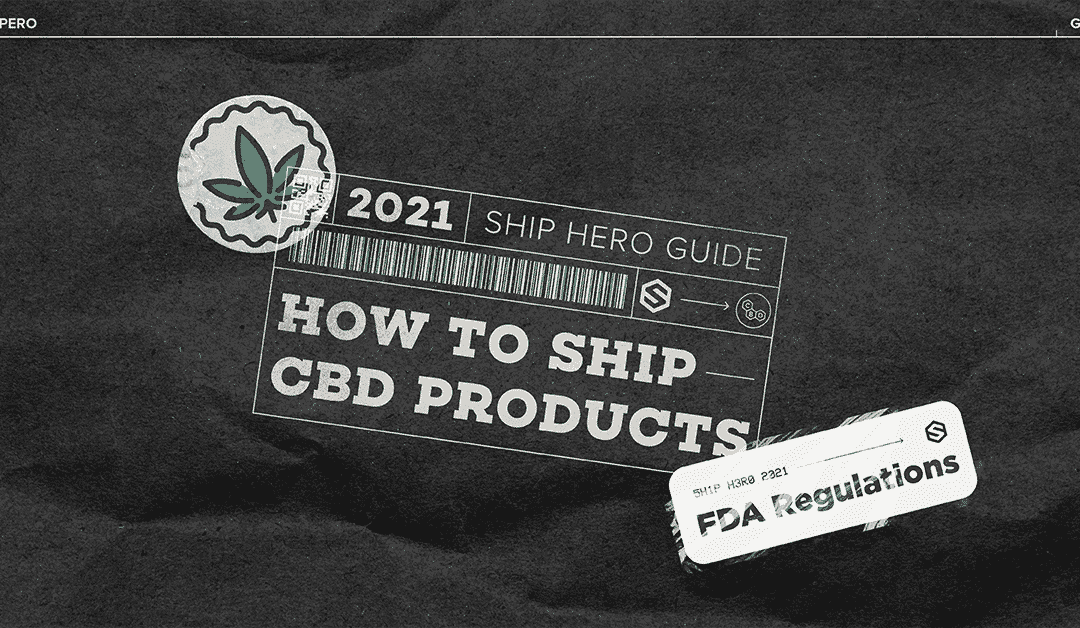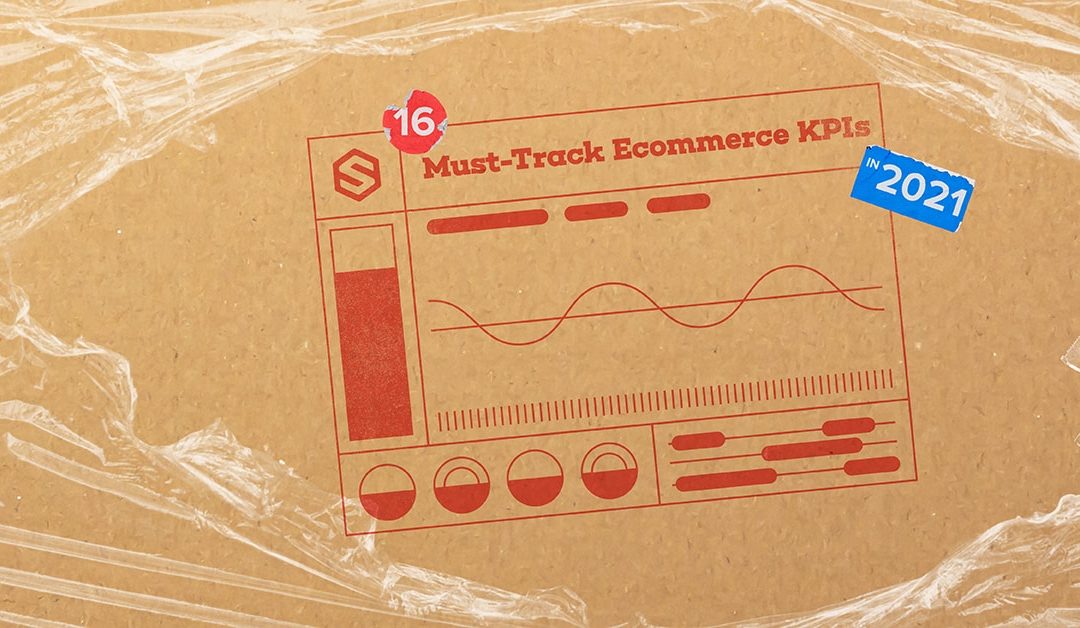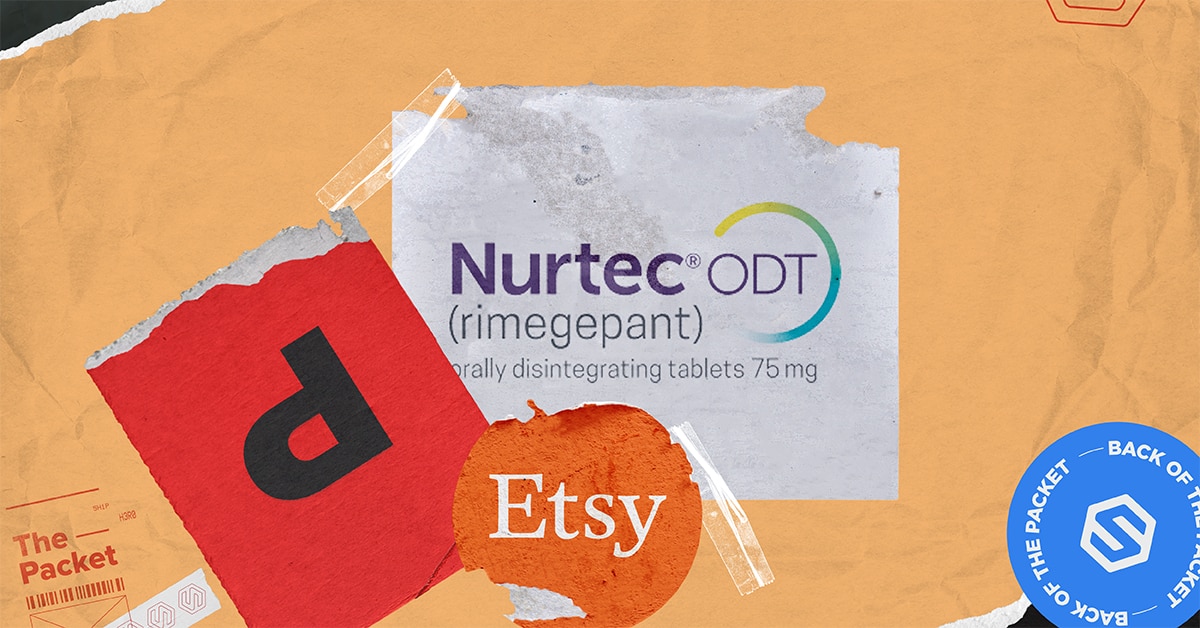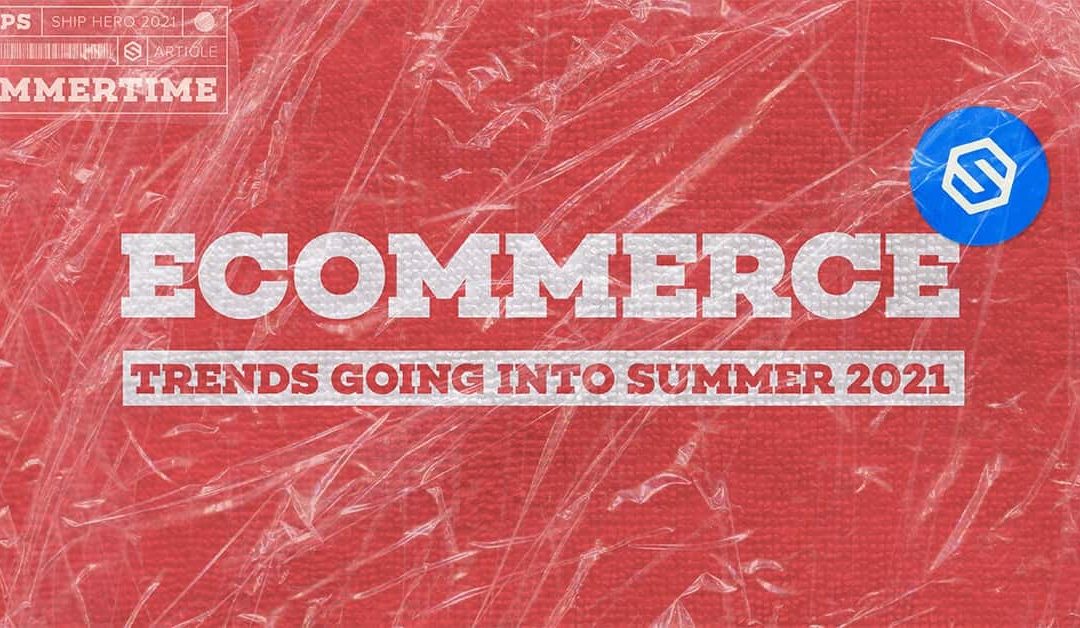
Jun 14, 2021 | Blog, The Packet
Front and Center
How the internet got broked :-P~
If you were to be perusing the interwebs early Tuesday morning, you would have immediately noticed something awry. Websites like Amazon, Reddit, Spotify, eBay, Twitch, Pinterest, many news sites, and even government service pages were showing Error: 503 messages, which typically appear when a website is under maintenance. Many took to message boards to find the cause, and even though service was restored before people started hoarding toilet paper again, it wasn’t until 24 hours later that a root cause was identified — and it turns out that it was a single, Fastly customer… imagine being that person.
No. What’s Fastly?
Fastly is a San Francisco-based cloud computing service provider that effectively makes loading times faster for websites (ah, Fastly, got it.) Yeah, it also optimizes images, videos and other large content to show up quickly when you load a web page. It does this by storing some website data from international websites in local data servers, instead of having to fetch them from faraway host servers every time. This “edge computing” method, which can be thought of as distributed fulfillment but for information, also performs various cybersecurity functions.
So who fudged up? I want names.
Okay psycho. Fastly sits between back-end web servers and the front-facing internet that we see, so any error in their system can cause entire websites to be unavailable.
On June 8, one UNNAMED customer (but pictured at the end) accidentally triggered a bug during a “valid configuration change”, which caused 85% of the company’s network to display errors. Within 60 seconds, the Fastly team identified and disabled the configuration, and within 49 minutes, 95% of the network was operating as normal. Quick work.
Could it happen again?
Fastly announced that it will be taking several steps to avoid outages in the future, including root-cause analyses and a complete evaluation of their bug-fix and deployment processes.
If you feel stressed by more and more companies falling victim to ransomware attacks and now the internet is going down, it may help to step away and take a breather this summer.
Want a free getaway?
Use code SHIPHERO123 at your front door to walk outside and enjoy the roses. Check out this botanical garden directory for roses near you, and tell them ShipHero sent you if you want to confuse the staff.
Back of the Packet
????Heard it Through Pipeline????
On Monday, the Justice Department announced that federal officials had recovered most of the Bitcoin ransom paid out for the recent Colonial Pipeline ransomware attack. While they did not specify how exactly they were able to track down the funds, feds said that they had recouped 63.7 of the 75 bitcoins ($2.3 million of the $4.3 million), exposing a common misconception that Bitcoin payments cannot be traced.
Ready Player 2
Meet Matt Furlong and George Sherman, Gamestop’s new CEO and CFO respectively, and they’re both Amazon-executive alumni. This move continues to signify the Reddit-obsessed gaming company’s efforts to completely level up their e-commerce business.
Amazon’s Privacy Fine
The Luxembourg data protection commission, the CNPD, has proposed a fine of more than $425 million against Amazon.com for violations against the General Data Protection Regulation (GDPR), which allows these privacy regulators to fine company’s up to 4% of a company’s annual revenue. This fine in particular would represent roughly 2% of Amazon’s reported net income ($21.3 billion), due to the violation being administrative in nature.
The Bezos Bros
TO THE MOON!???? (we’ll stop using this one day)

ShipHero News
Relaaaax
Shipping CBD products is now legal across all 50 states, but beware! Companies that want their share of this growing $2.8 billion market must comply with the FDA’s shipping regulations. That’s why we grind up the industry’s best practice and FDA guidance and roll it into this latest how-to guide to grow your CBD business!
Take a ride on the information superhighway!
Did you know: KPIs allow you to organize your company’s data and set specific and actionable goals against them. From social media to shipping logistics, you can use this information to track marketing trends, warehouse inventory, and customer service interactions. Dive into our latest blog for 16 must-track KPIs in 2021!
Best Print-on-Demand Companies of 2021
Whether you hope to make a business out of print-on-demand, want to sell merchandise to spread brand awareness, or think it’d be cool to sell your self-designed “Pfizer Gang” shirts, you must pick the print-on-demand company that’s right for you. In this blog, we explain print-on-demand and identify the top five print-on-demand services as of 2021.

Jun 8, 2021 | 3PL Warehouse Management, Best Practices, Blog, Fulfillment
Relaaaaax! CBD users can get their vapes, tinctures, lotions and more sent right to their doorstep as shipping stress-reducing CBD products have become legal across all 50 states. But suppliers, take heed: supplement and pharmaceutical companies that want their share of this growing $2.8 billion market must comply with the U.S. Government’s CBD shipping regulations, specifically regarding how much THC can be present in their products.
Companies must closely adhere to CBD shipping guidelines if they want to operate long-term. So if you don’t want your CBD business to go up in smoke, be sure to build a detailed strategy for your business, from payment processing to marketing and shipping.
In this article, we get into the nitty-gritty of shipping hemp-based products, including the current state of the market, how to package and ship CBD products and the types of products you can ship out.
Is CBD Legal to Ship? Factors to Keep in Mind
Yes, it’s legal to ship CBD oil and other CBD products, but only under certain circumstances. These are the main factors to keep in mind:
CBD and THC levels
CBD oil is only legal to ship if it is derived from the hemp plant, a type of cannabis plant that contains less THC than marijuana.
Do keep in mind that, according to US federal law, CBD products can only contain up to 0.3% of THC. Any higher and you’re sure to raise red flags.
Selling CBD or other products derived from the marijuana plant is still illegal at the federal level in the US.
If you’re wondering what the differences between hemp, marijuana, CBD and THC are, don’t fret. Here’s a quick explainer:
Marijuana and hemp are essentially the same plants. However, hemp has higher levels of CBD and lower levels of THC, while marijuana has higher levels of THC and lower levels of CBD. THC or tetrahydrocannabinol is the psychoactive agent that is found in cannabis. In short, it’s what gets people high. On the other hand, cannabidiol (CBD) is purported to provide relief for depression, anxiety, and PTSD, as well as help users fall asleep.
Growing licenses
All hemp products containing cannabidiol oil must be bought from a licensed grower. Each state has its own rules and guidelines on issuing licenses to growers, so make sure you or your supplier are able to secure a license from your state before selling any CBD-based products.
Testing
Before you can ship out your CBD products, you must first bring them to a third-party tester to identify the product’s chemical makeup. This will allow you to make any claims on the CBD and THC levels in your product.
The CBD Market in 2022
As CBD sales hit $4.6 billion in 2020, experts forecasted the CBD market to reach $12.64 billion by 2026.
The major growth drivers, according to one report, are rising government approvals of CBD products, increasing cases of chronic pain issues, anxiety, and depression (which CBD is purported to help alleviate), and rising popularity in the cosmetics industry.
One major market trend is the rise in online sales of cannabidiol oil and CBD-containing products. This means more and more people are choosing to have their CBD products delivered straight to their doorsteps rather than going out to buy them at a dispensary.
eCommerce businesses can take advantage of this trend and start catering to those who are reliant on eCommerce to get their CBD products.
The Types of CBD products
Legalized CBD products come in a few different varieties. The market is currently divided by how the supplement is derived from the plant, as well as the method of consumption. For the former, there are three choices available to consumers:
- Hemp
- Marijuana
- Other pharmaceuticals
Hemp-derived CBD products are the most in-demand category for e-commerce retailers, driven by hemp’s various healthcare applications. As medicinal CBD products become more widespread, more research will lead to more uses for it.
As for the method of consumption, CBD can be inhaled like traditional marijuana products, or consumed orally through edibles and other consumables. It can also serve as the main ingredient in health and wellness products, such as skin lotion, shampoo, candles, or animal-care solutions.
Shipping CBD Products Domestically And Internationally
When shipping CBD products locally, keep the following considerations in mind:
Be Careful When Shipping Internationally
Although shipping CBD products is legal in the United States, keep in mind that not all countries classify CBD as a legal substance. Some countries may even press charges or damage products beyond usability. So, not only will you be risking legal action, but you’ll likely see your products go to waste as well.
As such, make sure to check each country’s laws and seek legal advice before conducting business globally. eCommerce retailers need to be mindful of this complex legal landscape and adhere to these laws if they don’t want to lose their business.
Employ a Legal Team
If you’re committed to selling CBD products, make sure to keep a legal team close by to review all your statements and advise you on what you can and can’t do in certain localities. Remember that CBD and hemp-based products are not accepted in all US states despite not being federally-controlled substances.
Screen Your Suppliers
If you will merely be distributing CBD products, you need to be diligent about making sure your suppliers follow state laws and shipping regulations. Most carriers are stringent about having both products and suppliers meet their rules on shipping CBD.
How to Package and Ship CBD
When figuring out how to package your CBD products, it is best to find packaging that is odor-resistant, leak-proof, tamper-resistant, and compliant with state regulations. Vacuum-sealed bags and air-tight plastic containers may be your best bet here. To protect your packages from damage during transport, wrap items in thick, cardboard packaging.
When it comes to shipping, bear in mind that each carrier has different guidelines on shipping hemp-derived CBD products via mail.
USPS Shipping
When shipping through the USPS, you need to meet the following requirements:
- A signed self-certification statement printed on your company’s letterhead stating, “I certify that all information contained in this letter and supporting documents are accurate, truthful, and complete. I understand that anyone who furnishes false or misleading information or omits information relating to this certification may be subject to criminal and/or civil penalties, including fines and imprisonment.”
- Your industrial hemp producer is a licensed producer recognized by the USDA in the state where the post office is located.
- The THC concentration of your product is no higher than 0.3%.
UPS Shipping
To ship via UPS, you must have the following information on hand:
- The state where the industrial hemp was grown
- The manufacturing process that resulted in the end-product
UPS has clear guidelines stating that it will refuse shipment of any marijuana-containing products or CBD products from shops that also sell marijuana products.
DHL
DHL allows shipping of CBD products so long as sellers can provide records on state law compliance, laboratory test results indicating THC contents, government licenses, and compliance reports.
Another solution could be to use third-party logistics or fulfillment providers to handle every aspect of your CBD shipping, from storage to shipping. Fulfillment centers reduce the need to rent warehouses out to store your CBD products and take care of state and federal law compliance when shipping.
How to Market CBD Products
The CBD market is booming, and eCommerce retailers need to stay ahead of the curve. With so many competitors in this industry though there are still plenty of ways you can get your products noticed! Here are some online marketing tactics you can deploy to smoke your competition.
Note: Pay close attention to FDA guidelines on marketing CBD products.
Leverage SEO to Market Your Products
Search Engine Optimization (SEO) is a vital aspect of marketing CBD products. While it can appear complex and technical at first, SEO can still be more affordable and effective than other, more traditional approaches to marketing.
Building informative and entertaining content is the best way to gain traction in the CBD market. Some examples of CBD content marketing could include:
- Outbound posts on social media channels.
- Hashtags to maximize your reach by showing up in more people’s interest feeds.
- Creating a sense of community on social platforms to grow your company’s positive reputation in the industry.
Word-of-mouth and affiliate marketing
Word-of-mouth and affiliate marketing are important tools for eCommerce retailers. Affiliate marketing allows you to build relationships with third-party websites that entice clicks back towards your site, while also paying only when someone buys something because of them!
Influencer Marketing
Somewhat related to affiliate marketing, Influencer marketing is another fruitful channel for spreading product awareness. This is mainly carried out on social media platforms and video. With products such as CBD-related goods, the role of influencers is heavily regulated by the FDA to avoid the unintentional spread of misinformation. The influencer needs to be open and transparent about their commercial connection to the CBD manufacturer and retailer.
Email Marketing
Finally, email marketing still attracts some of the highest conversion rates of all the digital marketing channels. The customers that have subscribed to your updates are quite possibly the easiest pickings for your company to convert sales, so reward your loyal fanbase with discounts, free shipping, and more to generate quick sales.
Wrap It Up
The billion-dollar market for CBD products in the US is still expected to grow 10x its current rate by 2025. For eCommerce retailers that deploy a tight marketing and shipping strategy, the growth opportunities are immense, as long as you follow the FDA guidelines and avoid potentially business-ruining shipping infractions.
Run a tighter ship for your CBD online shop – consider outsourcing your fulfillment to a third-party fulfillment center like ShipHero.
The days of slow shipping are over. ShipHero has a quicker delivery speed than other 3PLs and you’ll be able to spend less money on it, too! Contact us to find out how the pros get their products into satisfied customers’ hands quickly and without breaking your budget or sacrificing quality of service in the process!
Shipping CBD Products FAQs
Can you mail hemp legally?
Yes, you can mail hemp legally as long as its THC concentration does not go any higher than 0.3%.
Can you ship CBD oil internationally?
You can ship CBD oil internationally to countries that recognize CBD as a legal substance. Not all countries do so, however, and may confiscate or destroy your products.
How do I know if my supplier’s CBD can be shipped legally?
To know if your supplier’s CBD is legal to ship, request a license to grow and produce CBD. You can also conduct third-party lab testing to see if their product’s THC levels meet the maximum standard.
–
About ShipHero: We make it simple for you to deliver your eCommerce. Our software helps you run your warehouse, and our outsourced shipping solutions eliminate the hassle of getting your products to your customers. With over 5,000 brands and 3PLs relying on us daily, we’re here to help with all your logistics needs.
Let us know how we can help you today by scheduling a call HERE.

Jun 7, 2021 | Best Practices, Blog, Warehouse Management Software
Introduction
The era of ecommerce runs on data. On a daily basis, terabytes upon terabytes of information are collected and analyzed. Although these data stores hold the key to ecommerce success with valuable insight for those that can find them, there is no way that the average person can break down and understand all that sales and order fulfillment data in a reasonable amount of time. That is where Key Performance Indicators (KPIs) come into play.
KPIs allow you to organize your company’s data and set specific and actionable goals against them. From social media to shipping logistics, you can use this information to track marketing trends, warehouse inventory, and customer service interactions. By breaking your KPIs down into categories as seen in this article, you can get a better idea of which tools might help you take the next step with your business.
Here are some of the KPIs that are worth exploring for ecommerce businesses:
Ecommerce Sales KPIs
If you want to track your ecommerce sales effectively, these are some of the most helpful KPIs.
Conversation Rates
When it comes to managing your marketing output, you need to know how many consumers interact with your advertising material. These conversations give you a better idea of how well your marketing campaigns are performing and which ones may need a little bit of improvement.
Cost of Goods Sold
The cost of goods sold lets you know how much your business spent manufacturing the products or services you’ve released into the world. These KPIs are ideal for revenue calculations and can help you to identify places in which to cut your production costs, should the need arise.
Lifetime Value
Repeat customers are the lifeblood of a business. Lifetime value KPIs help you track how many times particular customers return to your business and how much they’ve spent. These customers tend to cost you less to acquire, as they already have some awareness of your brand.
Revenue Per Visitor
Instead of identifying how much repeat consumers have spent at your storefront, these KPIs will instead calculate the average amount that a generic consumer may spend on your ecommerce platform.
Customer Acquisition Cost
Wooing consumers isn’t cheap. If you want to get a better idea of how much you’re spending to win sales from your consumers, though, this KPI can run the calculations for you. That way, you can have a better idea about which advertising campaigns are pulling their weight and which ones you may need to adjust.
Ecommerce Marketing KPIs
Want to understand the impact of your marketing? Take a look at these KPIs.
Site Traffic
A site traffic KPI lets you know how many people come to your platform, along with what their demographics are, whether they made any purchases, and which platforms they found your ecommerce website on.
Return on Ad Spend
Your advertising ROI is one of the factors that influences your success. A return on ad spend KPI lets you know how your consumer revenue compares to the amount of money you spent on a particular advertising campaign. These ratios will give you a better idea about which campaigns are performing well and which may need to be fine tuned.
Bounce Rate
Bounce rate KPIs let you know how a consumer interacts with your website and what ratio of visitors are leaving your site right away. These KPIs are ideal for identifying bot behavior, too, if you think a competitor may be spamming your site.
Newsletter Subscriptions
If you run a consistent email marketing campaign, it’s important to know just how well your campaigns are doing. Newsletter subscription KPIs keep track of new and retained newsletter subscriptions, ensuring that you have a better idea of who you’re talking to when you send out your newsletter each week.
Social Media Engagement
Social media is the lifeblood of the digital business. Engagement KPIs let you know who is interacting with your content online, either via comments, shares, or likes. These KPIs also let you keep track of which platforms you perform well on and how far your content has been shared by unaffiliated consumers.
Ecommerce Customer Service KPIs
Want to know how your customers feel about your products and service? Take a look at these customer service KPIs for ecommerce.
Customer Satisfaction Score
Like ROI, customer satisfaction score is an important variable that can impact your company’s success. Your KPIs generate this score based on the answers consumers provide on post-purchase or post-experience surveys.
While it isn’t always easy to get consumers to participate in these surveys, the ones that do can still provide you with valuable information about your company’s success. You can compare your existing KPI scores against the national average to determine what you could be doing more effectively.
First Response Time
Want to keep track of the amount of time it takes your HR team to respond to a customer’s concerns? First response time KPIs track just that. With this data at hand, you can improve your HR guidelines, specifying faster response times to cultivate improved relationships with your customers.
Customer Resolution Time
In a similar vein, there are KPIs available that let you know how long it takes your HR team to address and resolve a consumer’s product-related concerns.
Ecommerce Shipping and Logistics KPIs
A customer has made a purchase. Now what? Take a look at these KPIs for shipping and logistics.
Order Fulfillment and Accuracy
No one likes to receive an order that isn’t theirs. This KPI lets you know how many packages you’ve shipped that have successfully arrived at the appropriate destination. If the order fulfillment values start to dip, then you’ll need to consider the influence it can have on customer opinions about your business.
Order accuracy data will also let you know whether your 3PL delivery line needs to be improved. If you’re sitting on an unusually low percentage of accurate orders, then there may be line errors at your warehouse that you need to address.
Inventory Levels
Whether you have invested in warehousing solutions or store your own inventory, you need to know where your inventory levels stand on a day-to-day basis. Rely on inventory level KPIs to replenish your stock when necessary and to calculate your business’s average supply-to-demand ratio.
Order Volume
If you’re manufacturing products several months in advance, you need to know how much of your inventory goes out per month on average. Order volume KPIs calculate your sales by day, month, or quarter, depending on your needs. You can use year-out estimates to track the ebb and flow of your sales and to pre-produce inventory for each month.
Wrap It Up
With the collection and tracking of the above KPIs, you’ll keep your finger on the pulse of the health and success of your ecommerce business. From marketing KPIs that gauge the success of your advertising efforts, to shipping and logistics KPIs that illustrate how efficiently you get products to customers, an effective KPI reporting strategy gives your company’s decision-makers all the information they need to make informed choices.

Jun 7, 2021 | Blog, The Packet
Front & Center
Kings vs. Pirates – The Battle for European E-commerce
Epic much? As we reported back in February, dirty porch pirates have been running rampant during this e-commerce boom, with 43% of Americans reported having a package stolen, and two-thirds of those victims say they’ve had packages stolen more than once.
In Europe however, these theft figures are much lower because carriers do not leave parcels unattended on stoops, and mostly require parcel recipients to sign for packages at the door. GASP! And what’s more, if they miss their expected delivery, they must go all the way to the post office to retrieve their item. DOUBLE GASP!
So finding this delicate balance between security and convenience in Europe has been an ongoing battle, until one brave man who would be king threw his hat into the ring. Enter: Poland’s Parcel King.
The Rise of Poland’s Parcel King
In a true rags to riches story, Rafal Brzoska has gone from near-bankruptcy to billionaire by not delivering packages to individual houses; rather, his company InPost sets up automated e-commerce lockers the size of refrigerators for convenient pickup. As the legend goes, one of these parcel storage units can do the work of 24 trucks, and Brzoska says: “That’s why lockers are the future.” So it will be done.
Because these storage lockers cost only ~$20,000 to install, InPost wants to put one within “slipper distance” of every home and office in Europe. Storage costs $2 per parcel, and makes pickup quick and easy for shoppers as an easy alternative to home delivery.
The Fight Rages On
Europe’s postal services, UPS, and Amazon all took a different approach in Europe, by recruiting convenience stores and bodegas to handle package pickups and returns. However, without specific infrastructure for parcel delivery, the pandemic-led ecommerce boom has crowded aisles and jammed up these corner stores. And don’t even get them started on product returns.
Who Will Reign Supreme?
In January 2021, InPost went public on Amsterdam’s stock exchange, valuing the business at $9.7 billion and giving the Parcel King a net worth of $1.1 billion. His business model has so far proven that lockers are a cheaper, greener alternative to fleets of last-mile delivery trucks. Let’s see if that model has any grounds in busy U.S. metropolitan areas.
Back of the Packet

Etsy Buys Depop
Etsy has announced a deal to acquire Depop, the seconhand fashion app that has been considered the “resale home for Gen Z consumers” since its founding in 2011. Etsy and Depop agreed to a $1.62 billion deal primarily consisting of cash. Let’s just hope the shoe fits.
No More Headaches
On Thursday, the FDA granted approval for migraine medication, Nurtec, the first drug to recieve such approval for both migraine treatment and prevention. Nurtec’s creator, the Connecticut-based pharmaceutical company Biohaven, hopes to “change the way the whole field treats migraines”, according to Biohaven CEO Vlad Coric.
A$AP’s Rocky Road
On June 1st and only on June 1st, A$AP Rocky served as the CEO of the “buy now, pay later” software company, Klarna, after announcing a new partnership with the Swedish company. During his day-long tenure as Chief Executive Officer, Rocky worked on curating exclusive content for the Klarna app, focusing on upscaling vintage fashion.
ShipHero News
ALWAYS PROTECT THE GOODS
1 in 100 packages shipped annually by UPS or FedEx are reported as lost or damaged… that’s almost 8 million packages on the receiving end of some extra tough love. Learn how you can Avoid Damaged Goods And Customer Returns in our latest blog.
Summer Shoppin’ Happened So Fast
Ecommerce shopping habits change with the seasons, so are you prepared to handle the new customer experience in Summer 2021? From mobile optimization to voice search, check out our latest blog to learn this summer’s customer experience trends.

Jun 2, 2021 | Best Practices, Blog, Warehouse Management Software
Summer is a great time for margaritas and digital marketing. By focusing on the digital platforms that people visit most frequently in the warm months, your ecommerce business should be marketing the summer vibe with sizzling deals and scorching offers. Sunny weather makes people happier in general, so ecommerce business owners, especially in the dropshipping domain, need to be on the ball when it comes to customer experience. If you are not up-to-date on the latest trends in customer experience, your competitors will be.
With ecommerce margins already stretched thin for small to medium sized businesses, it is vital to capitalize on the latest tech and tools to win and retain customers. Especially during summer months, because customers spend less time looking at their devices as they do in the cold depths of winter.
It’s necessary to put in some extra work to grab the already limited attention span of your audience. Once you have it, how do you convert the sale? This article details the main customer experience trends in ecommerce going into the summer of 2021.
Create a Summer 2021 Strategy for Improved Customer Experience
The latest ecomerce trends for improved customer experience are the following:
- mobile optimization,
- micro-influencers,
- email marketing, and
- voice search.
The commonality found here are summer-savvy, ‘on-the-go’ styles of consuming information. From looking at a shopping app on the beach or checking email by the pool, your company should intelligently spend resources where people are looking.
Strategy 1: Mobile optimization
When people are on holiday, camping, or out sunbathing beside a swimming pool (must be nice), the summer months tend to be downtime for PC usage, and uptime for mobile devices, smartphones, and tablets.
Increased mobile usage also draws more people to social networks such as Facebook, Snapchat, and Instagram, which creates added opportunity for ecommerce merchants to sell or advertise on those platforms and makes it easier to reach your target audience. Depending on the age demographic of your products or services, create optimized ads and campaigns to suit summer buying behaviors.
Also, don’t be afraid to churn some marketing budget on running promotional campaigns geared specifically for the summer months. You can run these in isolation or try some re-targeted ads to your email database subscribers. Hitting people with the same message on multiple platforms is a proven approach to generating more attention and conversions.
Strategy 2: Utilizing the power of Micro-influencers
If you run a new company or are launching a new product, people usually require more convincing to buy, compared to a big brand or known entity. With ecommerce specifically, customers need to trust in what they’re buying to be convinced to open their wallets. The younger the potential customer, the more important it is to find a way to show them your product in all its glory.
Enter: Influencers. Showing people how things work is even more effective when the person doing the demonstration is someone they know.
Some surveys show that influencers or bloggers promoting your product can increase sales by upwards of 30%. This doesn’t mean you have to spend tens of thousands to enlist a d-list celebrity on Cameo. In fact, many survey respondents indicated that they respect and associate with micro-influencers more than celebrities that are just in it for the paycheck.
Beyond their effectiveness, another advantage of micro-influencers is that they are a lot more cost-effective than traditional online advertising channels. Some influencers will even agree to be paid in different ways than just cash, like free or discounted product.
Try negotiating with these influencers to give them product samples in return for promoting your products. Also, you could consider an ambassadorship, offering a percentage of sales instead of a flat fee agreement.
Strategy 3: Email marketing
Summer is not the time to overlook your hard-earned database of email subscribers. In fact, it’s the ideal time to catch people checking emails on the go, during an idle moment in an airport, ferry, or at their hotel.
While social media may create a buzz of activity and noise, it doesn’t come anywhere near email marketing regarding conversion rates. Email marketing is one of the best-performing of all digital channels in terms of creating conversions. More than 65% of users polled indicated they had purchased the back of an email campaign. That rate is more than double that of the combined social media platforms.
Email marketing is highly targeted since it enables you to send specific messages to people that have already expressed an interest in your products. Utilize a basic CRM and email marketing tool to track what your subscribers are interested in. You can update their preferences and send them only the most relevant products.
Ensure your email marketing campaigns show a clear ‘call-to-action’ button at the end. Summer sales, discount codes, and personalized recommendations are particularly effective. You can also use email marketing to clear overstocked products or discontinued seasonal lines.
Strategy 4: Turn up the volume on voice search.
Voice search accounts for around 50% of searches, by some reports. This varies by country, but there is no denying voice search is a growing trend.
Virtual assistant devices are present in an increasing number of homes. This creates a new opportunity for ecommerce retailers: Voice search optimization. Voice search does not directly compare to search engines optimization (SEO) and must have specific content.
Ensure that your website, and especially your product listings, are optimized for voice search. Voice search responds more to search phrases than it does to traditional keywords, so you should customize searches based on answers to questions.
Wrap It Up
Successful ecommerce retailers need to be leaders in customer experience along the shoppers’ journey. Creating a smoother customer experience means making it easier for people to buy from you wherever possible.
Position your products where people will see them during the summer months, mainly mobile devices, smartphones, and social media. When you’ve piqued their interest, ensure that the buying or decision-making experience is a smooth one. From showing color options to tech specs, your potential customers should locate and see more information quickly.






